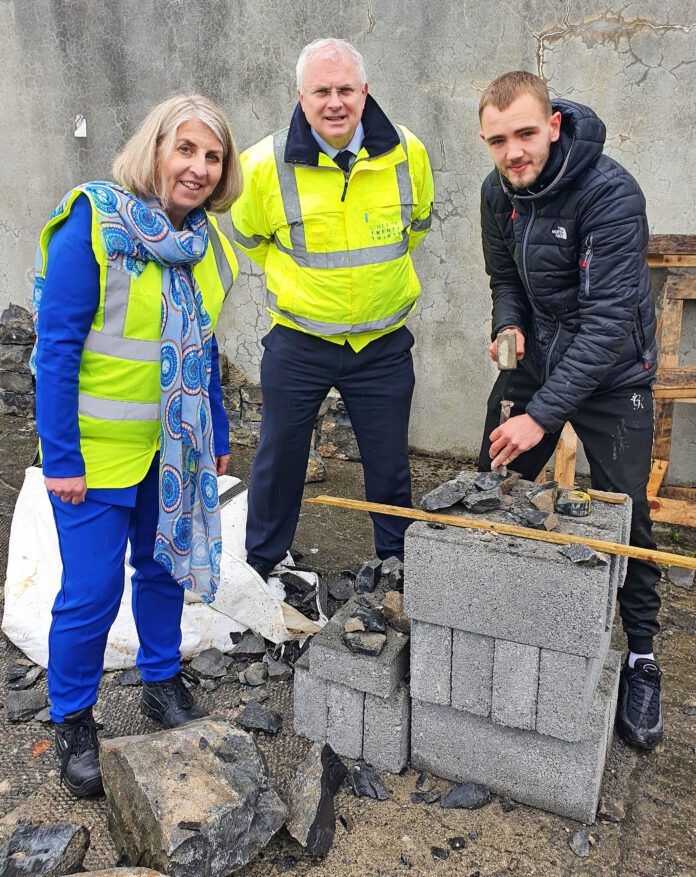
LIMERICK’S Opera Square is breaking new ground through a reuse and repurpose programme that is giving new life to stone and brick that would otherwise be discarded.
In addition to the retention of 16 historically important buildings on the city centre site, huge volumes of materials from the demolition programme are being diverted to other projects elsewhere in the city and county.
More than 1,000 tonnes of stone and brick have been salvaged as a result of a three-way partnership between the Southern Region Waste Management Office, the Limerick Twenty Thirty development company and works contractor John Sisk & Son.
The ‘reuse’ programme started with the country’s first ever pre-demolition audit, which identified which materials could be reused in advance of demolition works.
Among the projects the materials have since been diverted to are the Foynes Flying Boat museum, the Canal Harbour Building and bridge and old stone wall repairs around the county.
Significant volumes also have been diverted to training programmes for young stone masons, which has been supported by the Limerick City and County Council Regeneration programme.
It’s not just brick and stone that’s getting a new lease of life as other ‘reuse’ materials include palisade fence panels, which have been sent to Richmond Rugby Club; the metal gate and stone pillars from the entrance to the Granary Building, which are currently with the Civic Trust and items such as the historic limestone door case at 6 Rutland Street and cobble stones retained on site for future use.
Modern materials have also been segregated for reuse on the development including carpet tiles, ceiling tiles, timber, and glass.
The materials have been drawn from the site since the demolition and enabling works on the 1.62 hectare project a year ago.
Southern Region Waste Management Office project coordinator Phillipa King said that recycling and reuse programme has the potential to be a template for major projects involving large-scale demolition.
“The focus has ultimately been about diverting as much from waste as possible and we were not just talking about reuse alone but also repurpose and remanufacturing as well,” she explained.
Limerick Twenty Thirty chief executive David Conway said that sustainability is integral to all its projects.
“We have already set a new standard in terms of sustainable development with our first project, Gardens International, and we are going to maintain that standard with the Opera Square site and with the Cleeves Riverside Quarter and every single project we work on, big or small.
“However, what this project shows is that we are not alone going to have an environmentally proofed finished product but every step along the way is going to be as sustainable as possible,” he added.
Shane O’Donovan of John Sisk & Son said they were delighted to see the material being reused and that some was being used in training apprentices in the use of stone and stone masonry.
“The apprentices are cleaning and dressing the stone and preparing it for reuse on projects around the city and county such as wall repairs and graveyards and the like. That’s a really positive output as well.”
Opera Square is the largest single commercial property development undertaken outside of Dublin. The construction programme will see up to 500 people employed at peak output. When fully developed, the site will have the capacity for up to 3,000 employees across a 550,000 sq ft campus.
The programme will take up to six years to complete at an estimated cost of €250 million.










